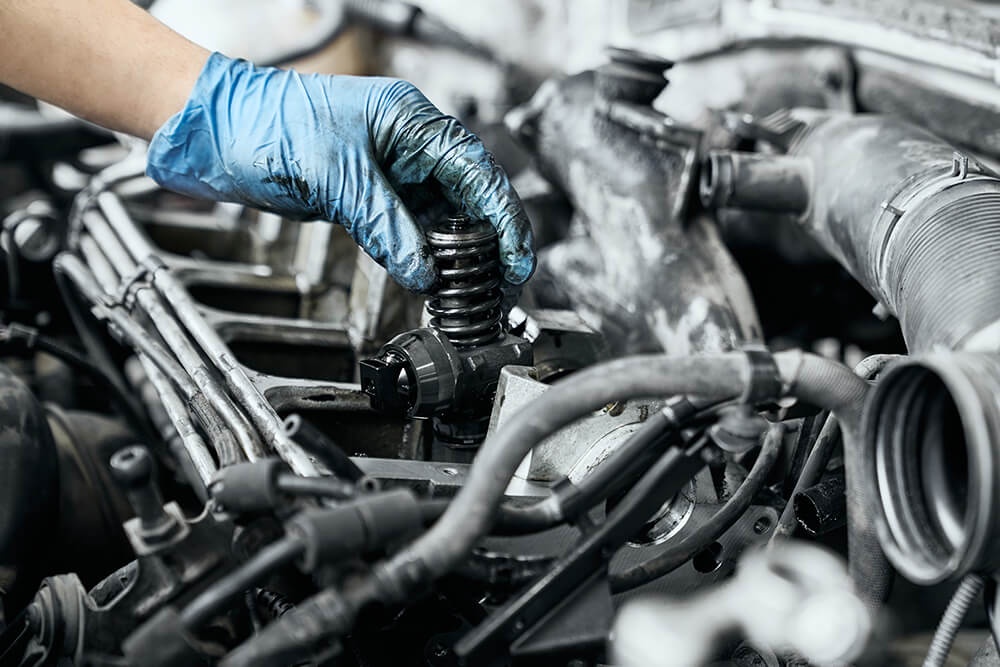Your car’s engine is a complex and intricate machine, made up of countless moving parts and systems that work together to propel you down the road. As with any machine, it’s inevitable that problems will arise from time to time. That’s why it’s important to be able to identify and diagnose common car engine problems before they become more serious issues.
In this blog post, we’ll discuss some of the most common car engine problems, their symptoms, and how to diagnose and fix them.
Common engine problems and their symptoms
Before we get into the diagnostic process, let’s review some of the most common engine problems and their symptoms. These include:
- Misfires: when the engine skips a beat and fails to ignite the fuel mixture in one or more cylinders
- Rough idling: when the engine runs unevenly or feels like it’s about to stall
- Strange noises: including knocking, rattling, and tapping sounds
- Warning lights: such as the check engine light, which can indicate a range of engine issues
How to diagnose engine problems
Now that you know what to look out for, it’s time to diagnose the problem. Here’s a step-by-step process for diagnosing engine problems:
- Listen for strange noises: If you hear any strange noises coming from your engine, try to identify where they’re coming from. Knocking sounds, for example, could indicate a problem with your engine bearings, while rattling could be a sign of loose parts.
- Check warning lights: If your car’s check engine light is on, it’s a good idea to have the codes read by a mechanic or use an OBD2 scanner to get more information about the issue.
- Scan for fault codes: If there’s no warning light on, but you suspect there’s an issue, you can use an OBD2 scanner to check for fault codes. These codes can help narrow down the problem and give you an idea of what needs to be fixed.
- Check your spark plugs: If your engine is misfiring or running rough, it could be due to worn or dirty spark plugs. Checking and replacing them is a relatively simple fix that can improve engine performance.
- Inspect your air filter: A clogged or dirty air filter can restrict airflow to the engine, leading to poor performance and fuel efficiency. Check and replace your air filter regularly to keep your engine running smoothly.
How to fix common engine problems
Once you’ve diagnosed the problem, you’ll need to know how to fix it. Here are some tips:
- Misfires: Replacing faulty spark plugs or ignition coils can often fix misfires. If the issue persists, you may need to have the fuel injectors cleaned or replaced.
- Rough idling: This could be due to a vacuum leak, dirty throttle body, or faulty sensors. Try cleaning the throttle body first, then move on to checking the sensors and vacuum lines.
- Strange noises: Depending on the source of the noise, you may need to replace worn bearings, belts, or pulleys. In some cases, a knocking noise could be due to low oil pressure or a failing oil pump.
Preventing engine problems
The best way to deal with engine problems is to prevent them from happening in the first place. Here are some tips for preventing engine issues:
- Stick to your car’s maintenance schedule, including regular oil changes and tune-ups.
- Avoid harsh driving conditions, such as extreme temperatures or heavy stop-and-go traffic.
- Pay attention to warning lights and unusual engine sounds, and address them promptly.
Conclusion
Your car’s engine is a complex machine that requires care and attention to keep it running smoothly. By knowing how to diagnose and fix common engine problems, as well as how to prevent them from happening in the first place, you can keep your car running smoothly and avoid more serious issues down the road. Follow Cash For Cars Helensvale for more updates.


No comments yet